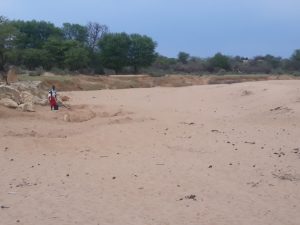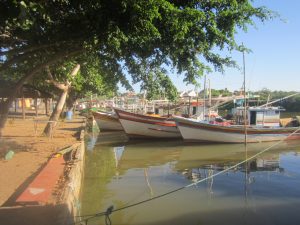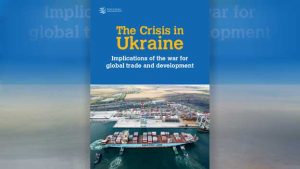SEATTLE, May 17, 2024 (GLOBE NEWSWIRE) —
UNITED STATES DISTRICT COURT
DISTRICT OF NEW JERSEY
| ROOFER’S PENSION FUND, on behalf of itself and all others similarly situated, Plaintiff, v. JOSEPH C. PAPA, et al., Defendants. |
Case No. 1:16–cv–02805–RMB–LDW CLASS ACTION |
SUMMARY NOTICE OF (I) PROPOSED SETTLEMENT
AND PLAN OF ALLOCATION; (II) SETTLEMENT HEARING; AND
(III) MOTION FOR ATTORNEYS’ FEES AND LITIGATION EXPENSES
To:
(1) All persons who purchased Perrigo Company plc’s (“Perrigo”) publicly traded common stock between April 21, 2015 and May 2, 2017, both dates inclusive (the “Class Period”), on the New York Stock Exchange or any other trading center within the United States and were damaged thereby;
(2) All persons who purchased Perrigo’s publicly traded common stock between April 21, 2015 and May 2, 2017, both dates inclusive, on the Tel Aviv Stock Exchange and were damaged thereby; and
(3) All persons who owned Perrigo common stock as of November 12, 2015 and held such stock through at least 8:00 a.m. on November 13, 2015 (whether or not a person tendered their shares in response to the tender offer of Mylan, N.V”).1
PLEASE READ THIS NOTICE CAREFULLY; YOUR RIGHTS WILL BE AFFECTED BY THE SETTLEMENT OF A CLASS ACTION LAWSUIT PENDING IN THIS COURT.
YOU ARE HEREBY NOTIFIED, pursuant to Rule 23 of the Federal Rules of Civil Procedure and an Order of the United States District Court for the District of New Jersey, that the Court–appointed Lead Plaintiff, on behalf of itself and the Court–certified Class, in the above–captioned securities class action (the “Action”) has reached a proposed settlement of the Action with defendants Perrigo Company plc (“Perrigo”) and Joseph C. Papa (collectively, “Defendants”) for $97,000,000 in cash that, if approved, will resolve all claims in the Action.
A hearing will be held on September 5, 2024 at 10:00 a.m., before the Honorable Leda Dunn Wettre, United States Magistrate Judge, in person in Courtroom 3C of the Martin Luther King Building & U.S. Courthouse, 50 Walnut Street, Newark, NJ 07101, to determine: (i) whether the proposed Settlement should be approved as fair, reasonable, and adequate; (ii) whether the Action should be dismissed with prejudice against Defendants, and the releases specified and described in the Stipulation and Agreement of Settlement dated April 4, 2024 should be granted; (iii) whether the proposed Plan of Allocation should be approved as fair and reasonable; and (iv) whether Lead Counsel’s application for an award of attorneys’ fees and payment of expenses should be approved.
If you are a member of the Class, your rights will be affected by the pending Action and the Settlement, and you may be entitled to share in the Net Settlement Fund. If you have not yet received the full printed Notice of (I) Proposed Settlement and Plan of Allocation; (II) Settlement Hearing; and (III) Motion for Attorneys’ Fees and Litigation Expenses (the “Settlement Notice”) and the Claim Form, you may obtain copies of these documents by contacting the Claims Administrator at Perrigo Securities Litigation, c/o JND Legal Administration, P.O. Box 91374, Seattle, WA 98111, 1–833–674–0175, [email protected]. Copies of the Settlement Notice and Claim Form can also be downloaded from the website for the Action, www.PerrigoSecuritiesLitigation.com.
If you are a Class Member, in order to be eligible to receive a payment under the proposed Settlement, you must submit a Claim Form online or postmarked no later than August 26, 2024. If you are a Class Member and do not submit a proper Claim Form, you will not be eligible to share in the distribution of the net proceeds of the Settlement but you will nevertheless be bound by any judgments or orders entered by the Court in the Action.
Any objections to the proposed Settlement, the proposed Plan of Allocation, and/or Lead Counsel’s application for attorneys’ fees and payment of expenses, must be filed with the Court and delivered to Lead Counsel and counsel for Defendants such that they are received no later than August 6, 2024, in accordance with the instructions set forth in the Settlement Notice.
Please do not contact the Court, the Clerk’s office, Perrigo, any other Defendant in the Action, or their counsel regarding this notice. All questions about this notice, the proposed Settlement, or your eligibility to participate in the Settlement should be directed the Claims Administrator or Lead Counsel.
Requests for the Settlement Notice and Claim Form should be made to:
Perrigo Securities Litigation
c/o JND Legal Administration
P.O. Box 91374
Seattle, WA 98111
1–833–674–0175
[email protected]
www.PerrigoSecuritiesLitigation.com
Inquiries, other than requests for the Settlement Notice and Claim Form, may be made to Lead Counsel:
Pomerantz LLP
Joshua Silverman
10 S. LaSalle Street
Chicago, IL 60603
1–312–377–1181
[email protected]
Bernstein Litowitz Berger & Grossmann LLP
James A. Harrod
1251 Avenue of the Americas
New York, NY 10020
1–800–380–8496
[email protected]
By Order of the Court
____________________________
1 Certain persons and entities are excluded from the Class by definition and others are excluded pursuant to request. The full definition of the Class including a complete description of who is excluded from the Class is set forth in the full Settlement Notice referred to above.

GLOBENEWSWIRE (Distribution ID 9112002)












